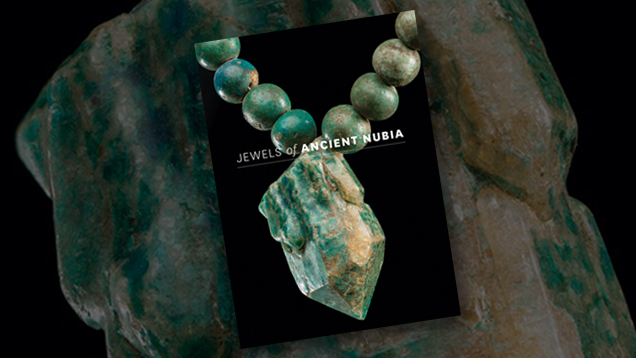Books: Jewels of Ancient Nubia

Modern-day knowledge of the kingdom is limited to accounts contained in ancient Egyptian records. Even though Nubia was a rival and a frequent enemy, the Egyptians referred to it as “the gold lands” for its precious metal and mineral resources. The Nubians themselves left very few written accounts, and their language is yet to be deciphered and translated. Appreciation of this fascinating culture later suffered the Eurocentric favoring of Ancient Egypt, and the modern world has known little about the region until recently. Jewels of Ancient Nubia provides the first comprehensive introduction to Nubian history through its artifacts.
The book features items made of gold, silver, and electrum (a natural gold and silver alloy) that illustrate the resources and the sophisticated goldsmithing techniques of the Nubian civilization. Similarly, local gems such as quartz, amazonite, ivory, mica, and malachite were used in many forms. There seems to have been an interest in lapis lazuli and carnelian beads, possibly influenced by the neighboring Egyptians. To the modern observer, the most outstanding jewelry pieces were created by glazing clear quartz. Faience, an ancient type of ceramic adopted from Egypt, was used to glaze quartz beads. In particular, they mastered the blue glazing technique, not only on beads but also on quartz sculptures and crystals. Quartz presumably held a deep religious significance for Nubians. These fascinating objects are beautifully photographed for the book and offer a visual delight.
It is fascinating to learn about the ancients’ degree of sophistication in creating imitation gems. Yet some of the descriptions of gemstones, minerals and rocks do not justify the detailed research of the subject. For example, the term “amethystine” is outdated, yet surprisingly used in this modern publication. A number of mineral and rock descriptions given in the glossary are inconsistent with modern mineralogical and gemological terminology. But given the significance of this subject, the nomenclature issues do not detract from the importance of this publication and the quality of the authors’ work. Jewels of Ancient Nubia deserves a place in any gemologist and jewelry historian’s library.



